The New Rules of Attachment
How to Heal Your Relationships, Reparent Your Inner Child, and Secure Your Life Vision
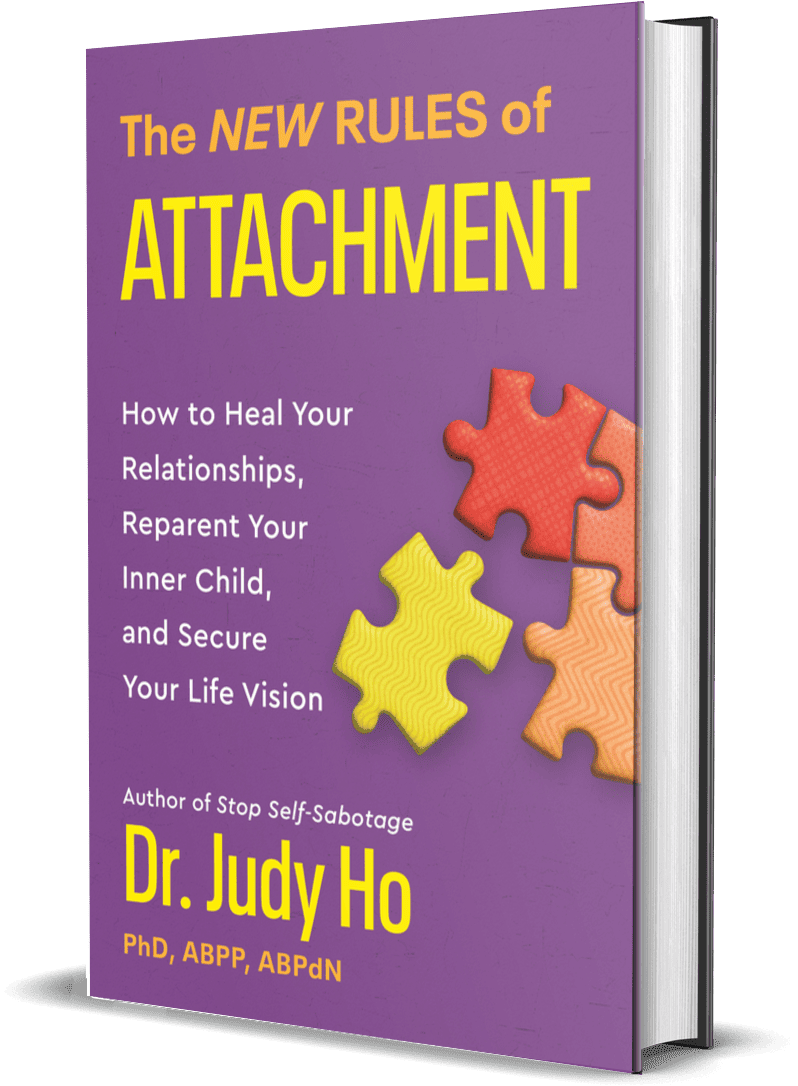
About the Book
A revolutionary approach to attachment theory that teaches readers how to heal their inner child to change their anxious, avoidant, or disorganized attachment style in relationships, friendships, at work, and home—perfect for readers of How to Do the Work, Polysecure, and Amir Levine’s Attached.
Did you know that attachment style impacts more than romantic relationships? As it turns out, most of us are thinking about Attachment Theory all wrong, and triple board-certified clinical and forensic neuropsychologist Dr. Judy Ho is here to set the record straight.
Grounded in the science of attachment, Dr. Judy’s game-changing approach shows that our attachment style impacts every aspect of our lives: friendships, career, goal setting, and, critically, our sense of self. Moreover, we can all learn to become securely attached—no matter what attachment style we developed in childhood—meaning that we can reclaim our ability to feel safe, loved, and capable of achieving the life we’ve always wanted.
Through Dr. Judy’s innovative program, readers will learn to identify their attachment style, recognize their core needs and wounds, and implement evidence-based practical tools to heal their inner child as they develop the secure attachment we all need to thrive.
Readers will also benefit from:
- A new attachment style quiz to identify your attachment style in all areas of life.
- A personalized approach that allows you to start making positive change today.
- More than two dozen transformative exercises to support your journey to healing.
- With warmth, authority, and a bias to action, The New Rules of Attachment is a call to achieving unconditional self-love and a meaningful, joyful life.


So many of us grew up in dysfunctional families with parents who were not skilled in helping us become the best version of ourselves. We either became too attached or not attached enough to the people, feelings or emotions that would allow us to thrive instead of just survive. The exercises in The New Rules of Attachment will be a significant breakthrough for those of us who want to finally release our childhood wounds, traumas and dysfunction. You will love yourself even more with your newfound sense of well-being.
I highly recommend getting a copy for you and a copy for someone you love.


In this must-read book, Dr. Judy navigates us through the intricate realm of attachment styles, illuminating a path to self-transformation. Ultimately, her book serves as a guide to help us embark on a journey towards a more empowered, fulfilling, and joyous life, while redefining our own potential and understanding of self.
Dr. Judy, all I can say is, “WOW!”


I don’t think I’ve ever had the human experience simplified and stripped down in such an easy to follow way, that only Dr. Judy Ho Can. This book takes such massive emotional fundamentals and helped me understand why I feel the way I do about so many things that I didn’t even realize I was feeling. This book is a must read.


Dr. Judy is unequivocally the leading authority on attachment theory and its profound practical implications. Her exceptional expertise transcends the mere identification of one’s attachment style, as she skillfully guides individuals on an enlightening voyage of self-exploration, profound epiphanies, and a multitude of revelatory “Aha!” moments.


“Dr. Judy Ho creates a compelling exploration of how our earliest bonds shape us in The New Rules of Attachment. Her insightful approach to reparenting and securing a life vision is both innovative and nurturing. This book isn’t just a guide; it’s a transformative journey for anyone seeking to understand and improve their relationships and self-concept. A must-read for those committed to personal growth and deeper connections.”


Dr. Judy Ho’s The New Rules of Attachment is a compass for your personal revolution. Brace yourself for a bold departure from the ordinary. Unearth your attachment style, mend old wounds, and redefine the game with quizzes and exercises that pack a punch. This book is your invitation to a life of self-love and authentic connections—a must-read for those ready to rewrite their story.


Embark on a transformative journey with Dr. Judy’s groundbreaking book on attachment! This book is beacon of light just like Dr. Judy and her work in the world. And this isn’t just a book; it’s a game-changer for your relationships—starting with yourself, extending to family, and sizzling into your romantic connections.
Dr. Judy’s innovative approach is a breath of fresh air, delivering evidence-based tools that will reshape your life in ways you’ve never imagined. I cannot wait for everyone to get their hands on this.


I recommend this book to everyone! Dr. Judy Ho breaks down attachment styles in a way anyone can understand. I will be keeping this close when I need more understanding of my anxious attachment.


“The New Rules of Attachment is a thoughtful, well-rounded guide for exploring attachment as well as different aspects of personality and self. I recommend it for anyone who is looking to dive deeper into learning about themselves.”


“Dr. Judy Ho provides a fascinating and insightful excursion into the world of human relationships by examining the types of attachments we form during our lifetimes. The book is loaded with practical tips, exercises, and activities that are certain to significantly enhance our emotional functioning and state of well-being. A fabulous read!”
Book Trailers
The Four Attachment Styles
Attachment Style:
Secure
Attachment Style:
Avoidant
Attachment Style:
Anxious
Attachment Style:
Disorganized
The New Rules of Attachment YouTube Playlist
Attachment Quiz
This quiz will help you to gain insight into which style most closely aligns with your behaviors and beliefs about ourself, and to see if there are any areas of your life where you exhibit different types of attachment.
How I See Myself
Download this PDF to help explore how you see yourself and challenge yourself to diversify you own self-concept.
Wheel of Life
Get a birds-eye view of your satisfaction across various domains of your life.
Boundaries Inventory
Explore your boundaries, identify your expectations and set a goal for healthier personal boundaries.
Simplified Self-Care
Download this document to help create an easy three-step plan to start incorporating self-care into your life.
Introduction
The Big Deal with Attachment
Most people come to see me because they are struggling, and they are looking for ways to turn their lives around. You may find that some of their concerns are familiar: Susan can’t seem to achieve the goals she sets for herself and has often self-sabotaged her good efforts along the way. Stuart is unsatisfied with his relationships and has trouble connecting meaningfully with others. Anne is plagued by negative self-talk that makes her feel unworthy of better outcomes, and she is suspicious of those who show genuine concern for her. Conner’s struggles with depression and shame lead him to isolate from friends and family and to stop pursuing his dreams. Bart’s insecurities about his worth drive his anxiety symptoms and a shaky self-esteem, which lead to clinging behavior in relationships.
By the time my patients get to me, they’ve usually been through a few cycles of making progress and then slipping back into their old struggles. Some of my patients tell me they feel hopeless and doubt that anything can really help them to get back on track. They’ve thrown in the metaphorical towel and have accepted the “raw deal” they’ve been handed in life. Their thinking gets stuck in: I’ll never have a good relationship, I’ll never have a job I love, I’ll never reach my goals for any of my dreams.
In these moments of deep pain, frustration, and anguish, many of my patients search for the bigger answers. They want to know why they find themselves in similar situations over and over again—and repeat patterns that don’t serve their lives, but they can’t seem to shake. And their big existential questions deserve big answers.
As a clinical and forensic neuropsychologist, one of my primary specialties is helping people gain insight into the roots of their mental health and life struggles. I go beyond identifying the problems they’re currently experiencing to discover why these problems are happening in the first place. Without understanding the origins of these difficulties, it can be challenging to develop a long-term strategy to manage the difficult thoughts, troubling emotions, and challenging situations that every person faces throughout their life.
More often than not, discovering those origins requires diving deep—all the way back to when we were children. So many of the challenges and struggles we continue to experience as adults have their roots in the patterns we learned in early childhood. And, when I say early, I mean as far back as the first few months to years of life, when we form ideas about ourselves and the world around us. These early learning experiences continued to impact how my clients as adults tried to create physical and psychological safety for themselves, their beliefs about how people were likely to respond to them, and how they approached relationships, their careers, and the goals they set for themselves in different areas of life. It created a default for how they interacted with the world, and even when these ideas were unproductive, unhelpful, and caused stress and discontent, they couldn’t break free from those beliefs. The perspective they developed about themselves and the world that underlie their nagging negative self-talk, recurring emotional struggles, and unhelpful behavior patterns, was due to attachment.
You may have heard of attachment by talking with your friends, seen a self-quiz on social media, read articles online, or discovered this concept at your therapist’s office. From my side of the couch, attachment is a fundamental aspect of human development that has a huge impact on our overall well-being throughout our lives. At its most basic level, attachment refers to the first emotional bond that forms between you and your primary caregiver(s). This first crucial bond, designed to keep you alive and thriving during a time when you can’t possibly care for yourself, sets the stage for the development of who you are, what you believe (particularly about yourself), and how you will interact with others.
We come into the world as blank slates, ready to learn everything we can from our social world, so experiences and the lessons learned that occur during childhood tend to stick with us into adulthood. Because these situations and interactions with our primary caregivers occur at a time when we are learning how the world works as well as who we are and our role in what happens, we come to believe how we responded to a situation then is a rule that should be applied to all other similar situations in the future. Even as we grow older, come into our own, and gain control over our environment, our inner child’s memories and experiences continue to impact us—sometimes in unhelpful ways. Your inner child is a metaphorical “little you,” the part of your psyche that is still childlike, innocent, and full of wonder. It is also the part of you that might harbor some unhealed wounds. Your inner child likely has needs that were not met, and you learned how to deal with that the best you could—but from a child’s perspective and abilities. That’s why it is common, as adults, when we are scared, confused, and longing for unconditional support, to feel the way we did when we were children and we did not get what we needed from our caregivers.
Because we form our attachments as a result of the connection we have with our caregivers—in many ways, the people who modeled what it is like to experience love, support, and be in relationship—attachment theory is referenced most often regarding romantic relationships. As the thinking goes: The way you learned to love is the way you will love, and receive love from, others. But as it turns out, our attachment style has an even further reaching (and commonly overlooked!) impact on our lives. Your attachment style doesn’t just determine what you expect in relationships, it becomes the foundation of your self-concept—the way you think about yourself and what makes up who you are: your thoughts, feelings, behaviors, attitudes, likes and dislikes, as well as what you value. Attachment experiences create templates for how you experience and interpret your social world and, by extension, how you take care of your needs and help you to predict how others are likely to respond to you. Secure attachment relationships typically result in more positive and balanced internal working models, meaning that you’re more likely to hold yourself in high esteem, have satisfactory and lasting relationships, and believe that you deserve good things in life. Insecure attachment generally leads to lower self-esteem, a shaky sense of identity, and doubts about self-worth and whether good things should happen to you—including loving and symbiotic relationships with others.
Because the influences of insecure attachment can be so far-reaching, sometimes people ask me if it is too late for them to heal their childhood wounds and traumas, fearing that the answer might be yes. But each time, I answer them with a resounding and confident, “No, it’s never too late to heal your attachment.” It doesn’t matter how old you are or where you are in life, whether you’re partnered or single, working or retired, estranged from your family, or feel burned from craving real connection but not getting it. The truth is, you only need one person with whom you can form a secure attachment in order to see your transformation to a secure attachment style. And it all starts with a secure attachment to yourself.
Developing secure attachment won’t transform you into someone with a million best friends, instantly establish deep intimacy with your romantic partner, and allow you to land your dream job tomorrow, but it will help you to begin to consistently believe in yourself and promote a healthy and stable self-concept that will pave the way toward confidently approaching all areas of your life with a deep sense of belonging and resilience.
You’ll have a much better toolkit in your arsenal to cope with stressful situations and to adjust to transitions throughout your life, such as moving to a new place, becoming a parent, taking on bigger responsibilities at work, planning for retirement, or becoming the caregiver for your aging parents. Being securely attached gives you the confidence to face whatever challenges come your way, to believe that good things are possible for you, and to know that you have a hand in creating these positive outcomes for yourself.
The tools in this book are those I have developed and refined through years of work with my clients to resolve their attachment issues, and I know that they can help you to build the stable and healthy attachment bond you deserve with yourself, the one person who has been with you from the very beginning and will be with you throughout your life. There is a version of you who has experienced all the good and bad you have encountered, the quiet observer who has seen everything that has happened, taken all the valuable lessons from each situation, and is now the wiser and more empowered part of you who can guide your inner child to self-development, deeper insight, and ultimate healing. This will be the foundation from which you can redefine who you are and what is possible for you. The life you desire is truly within your reach, and you can transform how you feel about yourself and how you interact with the world.
How to Use This Book
The goal of this book is to help you break free from the negative cycles of insecure attachment and develop your ability to be securely attached. No matter what happened in your past, you can work from where you are today—seeking change.
In the first chapters, you’ll become familiar with the core concepts of attachment theory, its impact on self-concept, and how both inform your life vision. To make sure you have an idea of where you’re headed on this healing journey, in Chapter 4, I will explain the characteristics of secure attachment and how these connected explorers meet challenges in different areas of their lives.
The quiz on page XXX will reveal your attachment style, and you can jump straight to the chapters that will address your avoidant, anxious, or disorganized style. There, you’ll find insights into how your attachment developed and how it has impacted you throughout your development from childhood to now. You’ll learn the most common traits of your style and how those characteristics manifest and play out in your life—in self-concept, relationships, with family and friends, at work, and in goal pursuits. In the chapters focused on healing your style, you’ll take a deep dive into a range of activities specifically designed to help you change the internal working models that keep you stuck and move you closer to achieving a secure attachment style. Every activity is supported by scientific research to help you counter the imbalance in your attachment style with practical tips that you can implement immediately in your daily life to, in effect, reprogram yourself toward a more secure way of interacting with others.
Before we jump in, I have a few important tips on how you can get the most out of this book. First, I highly recommend keeping a journal as you work through the exercises in this book. The physical act of writing can keep your mind engaged and bring a sense of calm, focus, and mindfulness to the task, but just as important, your journal will also give you a record of your thoughts and feelings that you can review later to note your progress. A journal doesn’t have to be a bound book—it can be whatever works best for you. Write in pen, marker, or pencil in a spiral notebook, on blank pages, or lined pages. You can even write on loose sheets of paper if you prefer, but if you do so I recommend collecting them in a folder, so they are gathered in one place for easy review. You can also use your journal for another purpose—it is possible that when you are first learning about attachment struggles and the consequences they have had on your life, you might experience grief, anger, or sadness for the things that have happened in the past; feel free to write about the thoughts and feelings that come up for you. All these emotional responses are completely normal and part of processing these deeper issues that have affected you. Through identifying and processing these feelings, you can continue to move forward to learn solutions and coping techniques to overcome such challenging internal reactions by doing the exercises in the book.
I’m a solution-oriented person, so I understand that you may feel the urge to rush through the material as quickly as possible. But keep in mind that the issues that have developed in your life did not arise overnight, so it will take some time and patience to work through what you are learning. Developing a solid foundation is important so that you can experience long-term benefits and resolve the recurrent problems in your life once and for all. So, please, take the time to fully absorb the information and discover how it applies to your life. I encourage you to take on all the exercises—even if you think they may not apply to you. Give them your best shot and work them all the way through. If something doesn’t feel helpful and doesn’t become a useful tool for you, that’s okay. The only way you’ll know is if you give it a try. This approach also ensures that whatever ends up in your toolbox after you have tried all the exercises will be the most effective and personalized strategies for you.
In the same vein, consistent practice will solidify your understanding and help you retrain your mind to let go of old patterns and adopt new ones. Revisit chapters when you need to, make time to regularly review exercises that have been particularly helpful for you, and keep working at it, especially when you find the influences of your old attachment style slipping back into your life.
Finally, if there is someone in your life who is also embarking on a similar self-development journey, consider talking with them about what you’re learning, and encourage each other to use your newfound skills to manage life’s problems big and small. Self-development, when done right, isn’t always going to feel comfortable; lift each other up when needed and lean on this connection that will help you to persevere when the going gets tough.
It is my greatest hope that the information and exercises in this book will guide you on your healing journey and that your new secure attachment style will allow you to find success in all areas of your life. No matter what you’ve been through, I know you can take charge of your life today and learn the tools to live a more empowered, satisfying, and joyful life.
Let’s dive in.


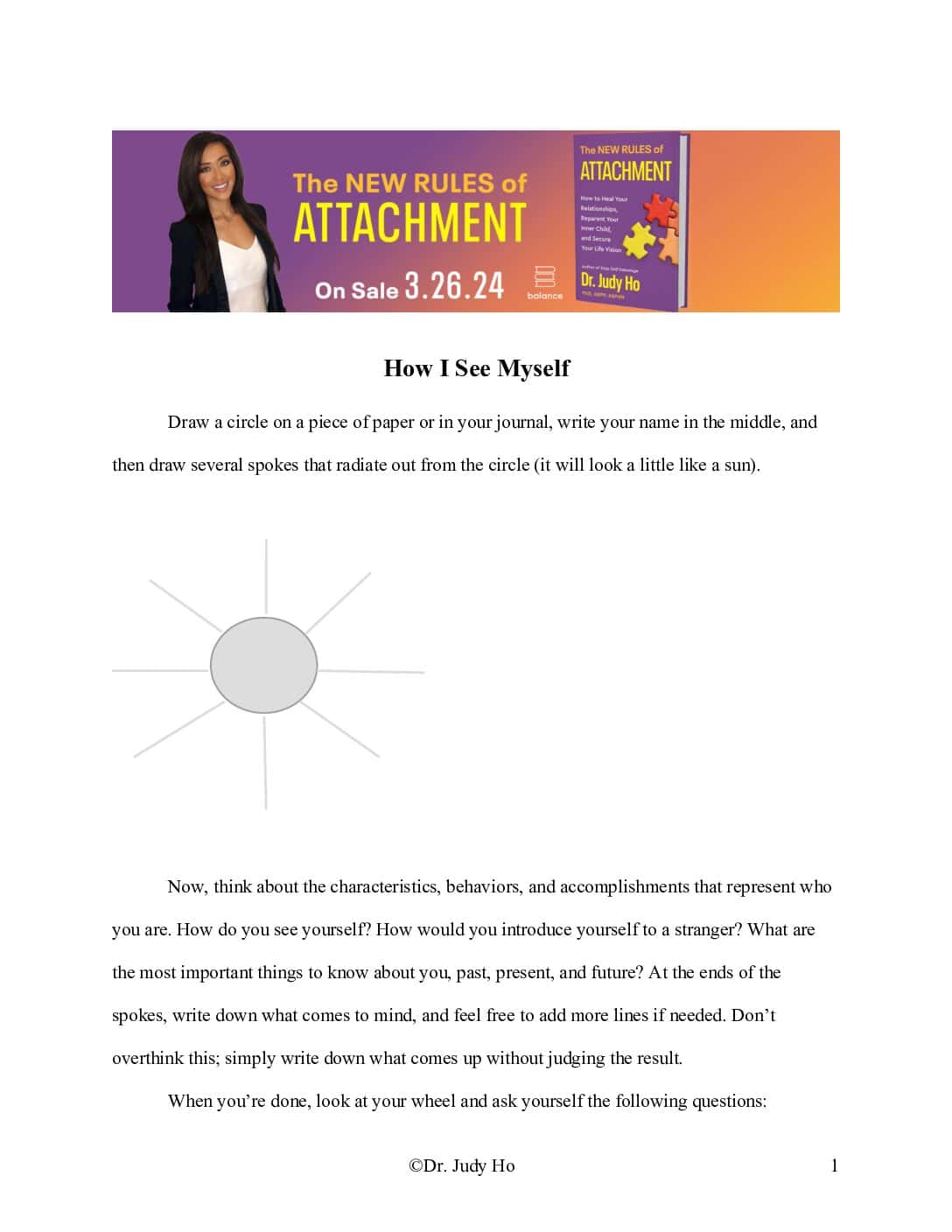
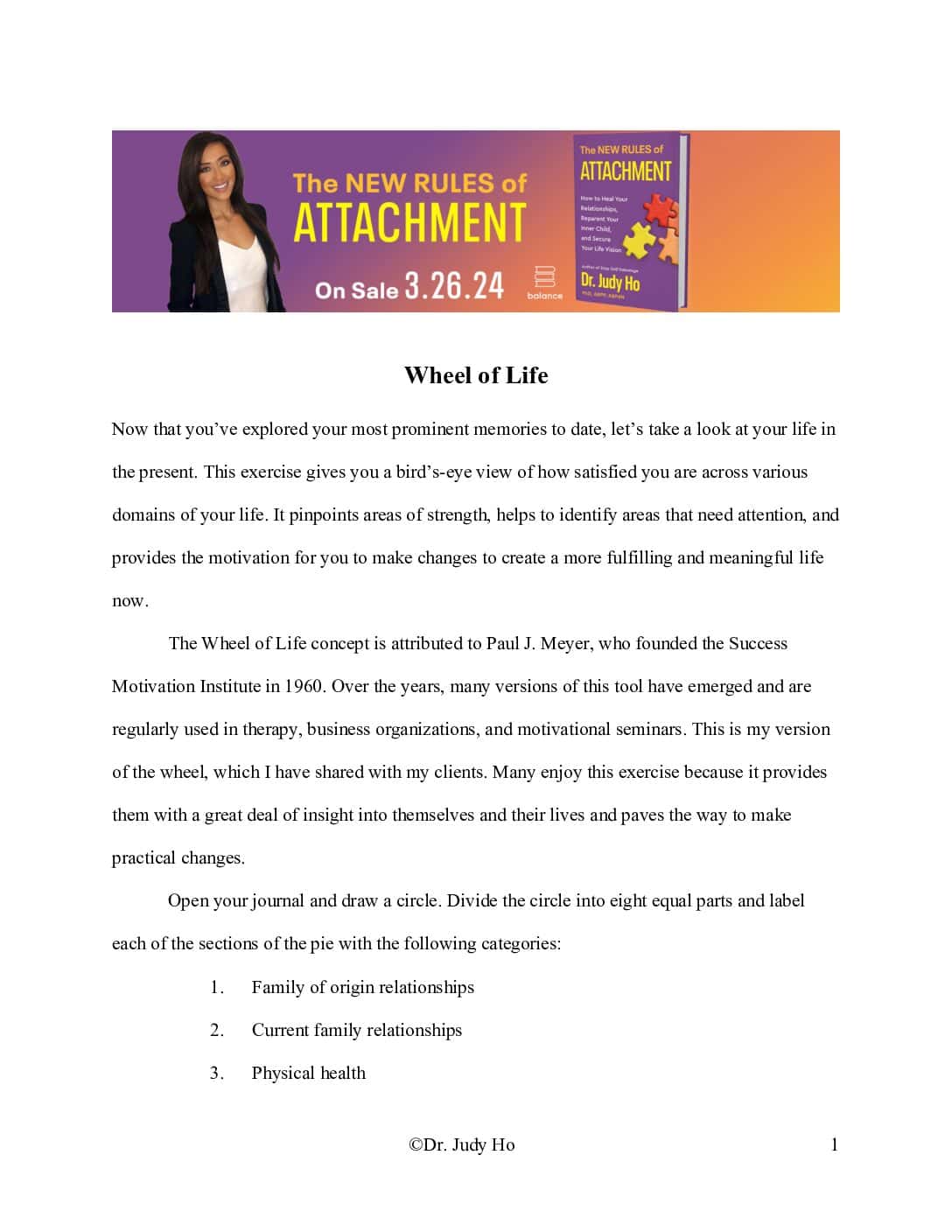
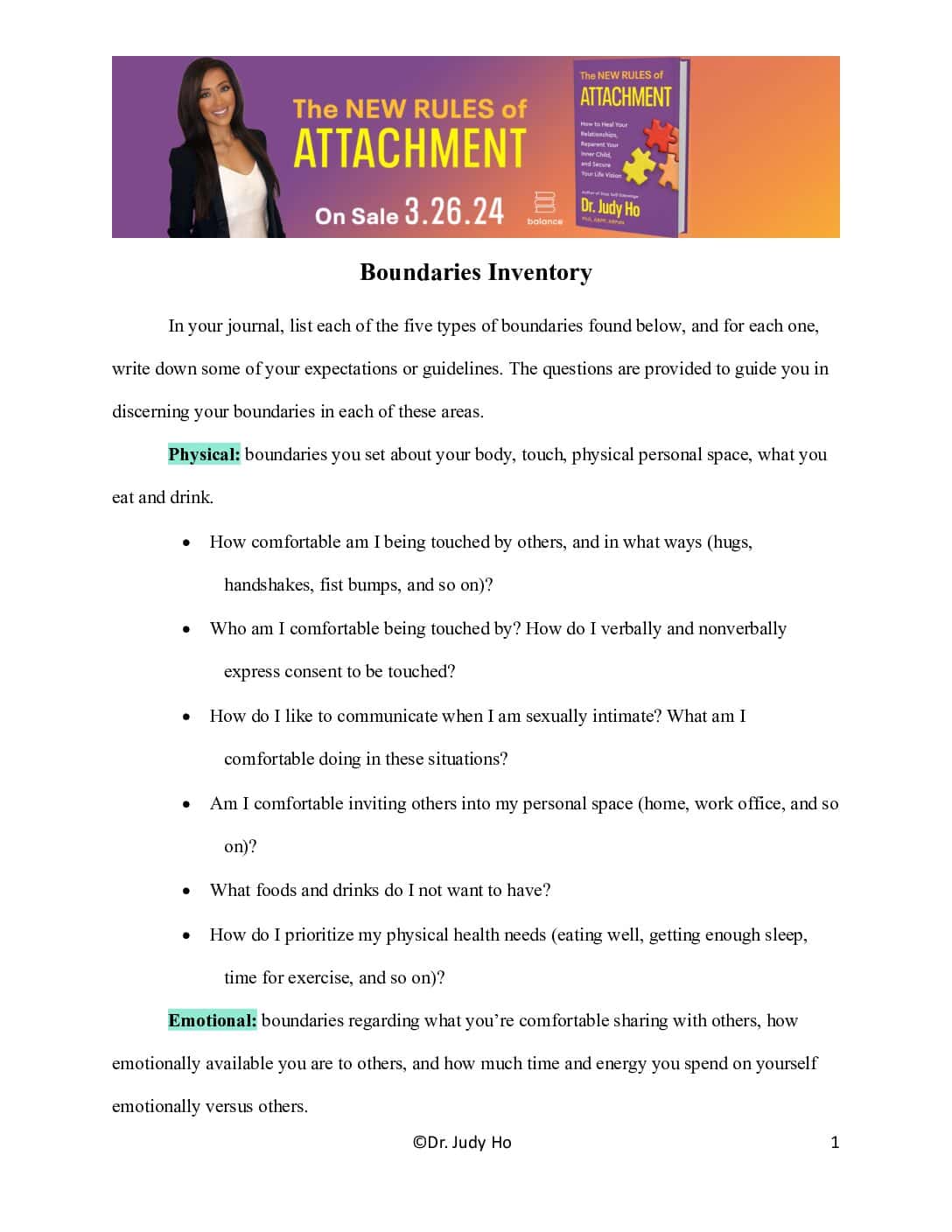
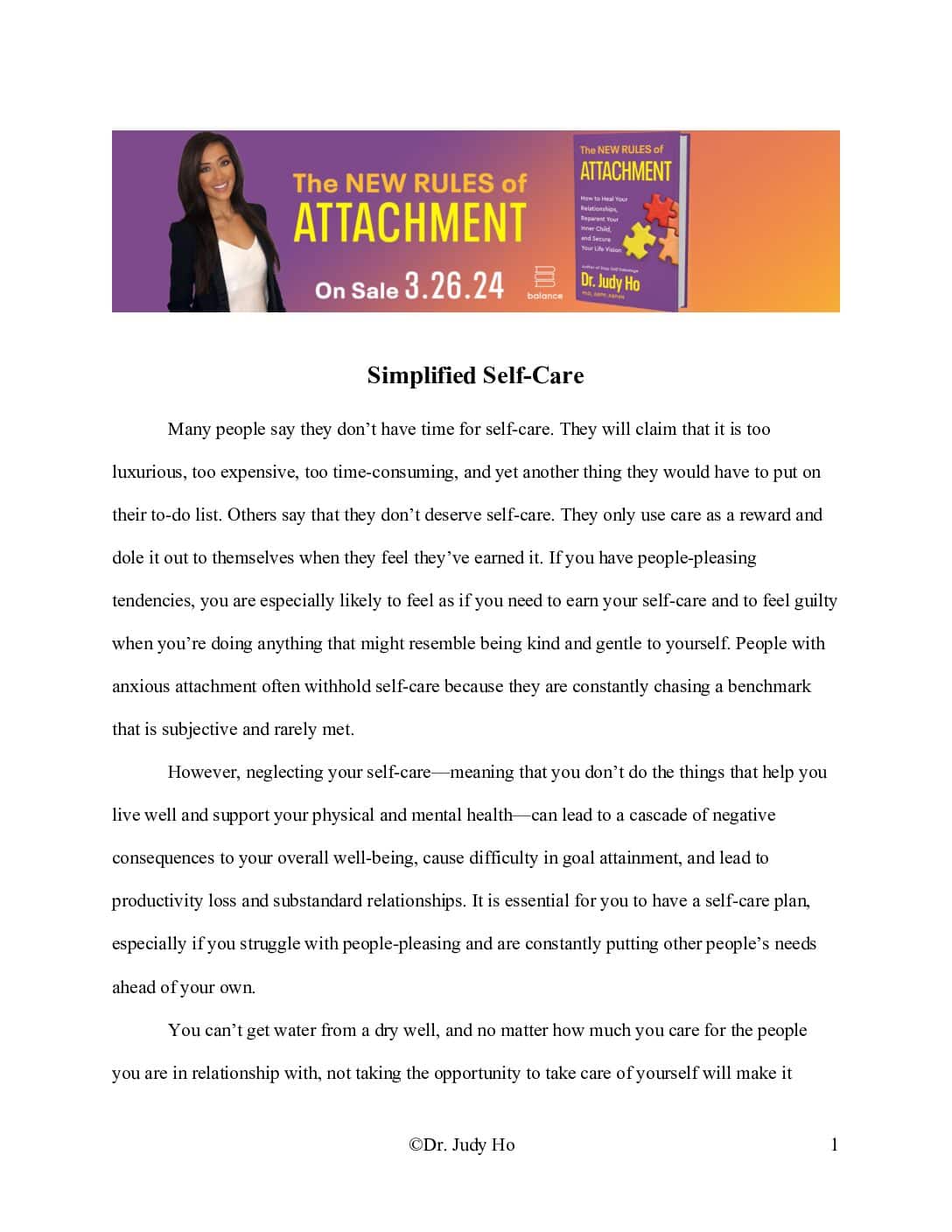
Follow Along.
Sarah Jessica Parker lets her kids enjoy sugar—and it may actually lead to a healthier emotional relationship with food!
While appearing on Ruthie's Table 4 podcast, SJP revealed that when she was a kid, she and her siblings "weren't allowed cookies, and we weren't allowed chocolate." As a mother, SJP's has chosen the opposite path: “In our house, we have cookies, we have cake. We have everything," she said in the interview, adding, "And I think as a result, you kind of have a healthier relationship."
Restricting certain foods can lead to guilt and shame when children inevitably encounter and consume them, which can create an unhealthy emotional relationship with food where certain foods are associated with negative emotions. This may lead to kids sneaking or overeating the foods when they get their hands on them, thus contributing to unhealthy eating habits and increasing the risk of eating disorders.
It’s important to keep in mind that allowing a “free-for-all environment” can backfire, too, but the key here is balance! Allowing sweets in moderation and teaching kids balance should be the ultimate goal—so SJP's approach is definitely on the right track! Check out the full Parents article for more insights: ... See MoreSee Less
Sarah Jessica Parker on Allowing Her Kids To Eat Sugar—Here’s Why We Applaud Her
www.parents.com
Sarah Jessica Parker shared her food philosophy when it comes to sweets and her kids on a podcast. Here's why one mom agrees.0 CommentsComment on Facebook
@ drjudyho . Mar 28
Thank you Jessica Baum for this generous review!!
"Dr. Judy Ho`s The New Rules of Attachment is a compass for your personal revolution. Brace yourself for a bold departure from the ordinary. Unearth your attachment style, mend old wounds, and redefine the game with quizzes and exercises that pack a punch. This book is your invitation to a life of self-love and authentic connections—a must-read for those ready to rewrite their story."
―Jessica Baum, LMHC, CAP, LMHC, Author of Anxiously Attached: Becoming More Secure in Life and Love
#AttachmentStyle #PersonalGrowth #SelfLove #BookReview #RewriteYourStory #MentalHealth #SelfImprovement
Thank you Jessica Baum for this generous review!!
"Dr. Judy Ho`s The New Rules of Attachment is a compass for your personal revolution. Brace yourself for a bold departure from the ordinary. Unearth your attachment style, mend old wounds, and redefine the game with quizzes and exercises that pack a punch. This book is your invitation to a life of self-love and authentic connections—a must-read for those ready to rewrite their story."
―Jessica Baum, LMHC, CAP, LMHC, Author of Anxiously Attached: Becoming More Secure in Life and Love
#AttachmentStyle #PersonalGrowth #SelfLove #BookReview #RewriteYourStory #MentalHealth #SelfImprovement ...
Join CalHOPE & me for a webinar titled “Nurturing Mental Well-Being in Challenging Times." Learn how to foster your well-being with strategies that cultivate resilience & allow you to find peace in tumultuous times. Mark your calendar for APR 16 at 7PM PT! https://tinyurl.com/57uuv572